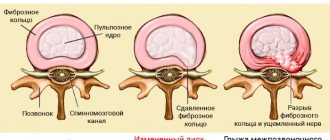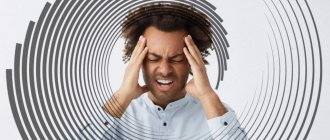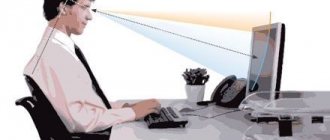Pediatric epileptology is a subsection of neurology devoted to epilepsy at a young age. This is a disease in which repeated attacks occur - paroxysms. The diagnosis can be made only if at least two seizures have occurred, and no other causes other than epilepsy could lead to them.
The fact is that in young children, convulsions can occur when the temperature rises during infectious diseases, intoxication, or the administration of certain medications, as a reaction to vaccinations. Seizures may accompany metabolic disorders such as diabetes.
Children often suffer from this disease: statistics say that it occurs in 7 out of 1000 children under the age of 16. In addition, in childhood the disease occurs with certain characteristics. It is for this reason that pediatric epileptology was singled out.
Signs of epilepsy
Pediatric epileptology identifies the following main symptoms of the disease:
- Grand mal seizure. This is the main symptom of epilepsy. It can begin suddenly, but more often it is preceded by an “aura” - specific sensations, for example, the feeling of a breath of wind, sparks before the eyes, some kind of unclear sound. After this, the patient makes a sharp sound caused by a spasm of the glottis, then he begins to have convulsions that take over the whole body, his breathing becomes noisy, and foam comes out of his mouth. The attack ends on its own, after which the patient may fall asleep and not remember what happened to him, or remain conscious, remaining confused for some time. Seizures may occur rarely or several times a day.
- Minor convulsive seizure. During it there are no general convulsions. The patient makes automatic movements: turning the head, chewing movements and other automatisms. With them, a short-term partial disorder of consciousness is observed.
- Absence. This symptom most often occurs in children, and more often in girls than in boys. It manifests itself in the fact that the child disconnects from reality: he stops speaking and moving, freezes, his gaze is fixed at one point, he does not react to external stimuli. There are no convulsions in this case.
In addition to these striking manifestations, epilepsy in children may be accompanied by:
- sleepwalking;
- mood disorders, the appearance of irritability, sudden changes in mental state;
- a change in character, the appearance of hypertrophied pedantry and accuracy.
Epileptic seizures can occur both while awake and during sleep, quite often when falling asleep or waking up.
Mechanism of occurrence of an epileptic seizure
The root cause of epilepsy is excessive activity of brain cells. It usually occurs in a certain area - the epileptic focus, in the cells of which the excitation processes are modified.
Causes of epilepsy in children
The opinion that epilepsy is an exclusively hereditary disease is not supported by modern doctors. Some of its forms are not inherited, some are a consequence of structural damage to the brain (focal cortical dysplasia, congenital anomalies of brain development, tuberous sclerosis, gangliomas, etc.). It is also impossible to say unequivocally that any diseases suffered by a person lead to epilepsy, but they can accelerate the onset of the disease. These factors are:
- birth injuries, the occurrence of oxygen deficiency at birth;
- traumatic brain injuries;
- cerebral hemorrhages;
- neoplasms in the brain (cysts, hematomas, tumors);
- brain abscess;
- infectious, parasitic, viral diseases;
- meningitis, encephalitis.
What is the danger of epilepsy in children?
- During an attack, a child can be seriously injured, choke on vomit, or bite their tongue or cheek.
- In addition, children have frequent and severe attacks at short intervals, when they simply cannot recover.
- Due to constant attacks, chronic pneumonia can form and mental retardation can develop.
Types and symptoms
Epilepsy is multifaceted and multifaceted; its symptoms are not limited to seizures. The most common classification is depending on the severity of attacks and their main manifestations.
Aura (harbingers)
Many epileptic seizures begin with an aura. This is the name given to a complex of specific sensations that occurs shortly before a seizure. Manifestations of an aura can be completely different: paresthesia (pathological sensations), a specific taste in the mouth, auditory, visual or olfactory hallucinations, etc. Before the appearance of an aura, a person often begins to experience causeless anxiety and internal tension.
Partial (focal) seizures
These conditions occur when a small area of the brain is involved in pathological overexcitation.
Simple partial seizures are characterized by preserved consciousness and last only 1-2 minutes. Depending on the location of the pathological focus, a person feels:
- sudden change of mood for no apparent reason;
- small twitching in a certain part of the body;
- feeling of déjà vu;
- hallucinations: lights before the eyes, strange sounds, etc.;
- paresthesia: a feeling of tingling or crawling in any part of the body;
- difficulty pronouncing or understanding words;
- nausea;
- change in heart rate, etc.
Complex attacks are characterized by more severe symptoms and often affect consciousness and thinking. Human can:
- lose consciousness for 1-2 minutes;
- there is no point in looking into emptiness;
- scream, cry, laugh for no apparent reason;
- constantly repeat any words or actions (chewing, walking in a circle, etc.).
Typically, during a complex seizure and for some time after it, the patient remains disoriented for some time.
Generalized seizures
Generalized seizures are one of the classic signs of epilepsy that almost everyone has heard of. They occur if the epileptogenic focus has spread to the entire brain. There are several forms of seizures.
- Tonic convulsions. The muscles of most of the body (especially the back and limbs) simultaneously contract (come to tone), remain in this state for 10-20 seconds and then relax. Such attacks often occur during sleep and are not accompanied by loss of consciousness.
- Clonic convulsions. Rarely occur in isolation from other types of attacks. Manifested by rhythmic rapid contraction and relaxation of muscles. The movement cannot be stopped or delayed.
- Tonic-clonic seizures. This type of attack is called grand mal, which means “great illness” in French. The attack is divided into several phases: precursors (aura);
- tonic convulsions (20-60 seconds): the muscles become very tense, the person screams and falls; at this time his breathing stops, his face becomes bluish, and his body arches;
- clonic convulsions (2-5 minutes): the muscles of the body begin to contract rhythmically, the person thrashes on the floor, foam is released from the mouth, often mixed with blood due to a bitten tongue;
- relaxation: convulsions stop, muscles relax, involuntary urination or defecation often occurs; consciousness is absent for 15-30 minutes.
After the end of a generalized seizure, a person remains for 1-2 days feeling overwhelmed, problems with coordination of movements and fine motor skills. They are associated with cerebral hypoxia.
- Atonic attacks. They are characterized by short-term muscle relaxation, accompanied by loss of consciousness and falling. The attack lasts literally 10-15 seconds, but after it ends the patient does not remember anything.
- Myoclonic seizures. They manifest themselves as rapid twitching of the muscles of individual parts of the body, usually the arms or legs. The seizure is not accompanied by loss of consciousness.
- Absence seizures. The second name for attacks is petit mal (minor illness). This symptom of epilepsy occurs more often in children than in adults and is characterized by a short-term loss of consciousness. The patient freezes in place, looks into emptiness, does not perceive speech addressed to him and does not react to it. The condition is often accompanied by involuntary blinking of the eyes, small movements of the hands or jaws. The duration of the attack is 10-20 seconds.
Pediatric epilepsy
Childhood epilepsy has many masks. In newborns, it can be manifested by periodic muscle contractions that do not resemble seizures, frequent tilting of the head back, poor sleep and general restlessness. Older children may suffer from classic seizures and absence seizures. Partial seizures most often occur:
- severe headaches, nausea, vomiting;
- short periods of speech disorder (the child cannot utter a single word);
- nightmares followed by screams and hysterics;
- sleepwalking, etc.
These symptoms are not always a sign of epilepsy, but they should serve as a reason for an urgent visit to the doctor and a full examination.
Diagnosis of epilepsy
- Before making a diagnosis of epilepsy, a specialist in pediatric epileptology finds out all the nuances of the course of attacks: their frequency, what preceded them. Talking to parents who can describe their child's seizure in detail is one of the key points in diagnosing epilepsy.
- To exclude any other causes of seizures, laboratory and instrumental examinations are prescribed, as well as consultations with highly specialized specialists - a cardiologist, endocrinologist, gastroenterologist and others.
- To clarify the diagnosis, electroencephalography (EEG) is performed. With its help, the bioelectrical activity of the brain is assessed and the area of increased excitability is determined.
- A study such as Video-EEG monitoring is also used, in which, simultaneously with the instrument readings, the behavior and paroxysms described by the patient’s parents are recorded on a video camera.
- Computed tomography and magnetic resonance imaging (MRI) may be prescribed.
Consultation with an epileptologist at SM-Doctor
In our clinic, parents can get advice from an experienced epileptologist. The doctor’s tasks at the initial and subsequent appointments are as follows:
- Assess symptoms.
- Determine its origin.
- Find out whether the symptoms are due to epilepsy.
- Determine the cause of neurological disorders.
- Select treatment and monitor its effectiveness.
Advantages of contacting SM-Doctor:
- Wide diagnostic capabilities.
- Selection of treatment that is effective in the vast majority of patients.
- Monitoring the effectiveness and tolerability of treatment - it is important that it not only eliminates epileptic attacks, but also does not cause side effects and is well tolerated by the child.
- The presence of doctors of other specializations allows us to provide the patient with comprehensive medical care.
What does a neurologist do during an examination?
The appointment begins with a conversation with the patient and collection of anamnesis. It is imperative to inform the neurologist that there were diseases of his profile in the family, tell in detail about the symptoms, say when and how they began, etc. You must bring all available medical documentation to the appointment - examination results, an outpatient card, if you have it on hand. If it is impossible to speak clearly with the patient, a relative or accompanying person should come to the appointment and answer questions. Based on the results of the initial conversation, the doctor will understand whether there are any speech or consciousness disorders.
Then an external examination of the patient is carried out. The neurologist pays attention to the symmetry of the shoulders and limbs, posture, motor activity, and notes trembling of the hands or body. The doctor will ask you to squeeze their arm to test muscle strength. With neurological pathology, it can be different in different hands.
The neurologist examines reflexes - cutaneous, periosteal, pupillary, tendon, meningeal. Tendon reflexes are tested by lightly hitting the tendon of the target muscle with a hammer. Pupillary - by moving the hammer in front of the patient's face, who must follow it with only his eyes.
Types of mucosal reflexes and ways to test them:
- pharyngeal - if you act on the mucous membrane of the pharynx, swallowing will occur;
- palatal - the palate tightens when you touch it;
- corneal - when the doctor touches the cornea of the eye, the eyelids close;
- anal - the sphincter contracts when there is tingling around the anus.
Skin reflexes are tested by irritating the skin with a specific object. As a result, the muscles contract locally. There are the following skin reflexes:
- plantar – the toes bend when the skin of the foot is applied;
- cremasteric - if you act on the skin of the thigh from the inside, the testicle is tightened;
- abdominal - the doctor quickly moves the handle of the hammer along the skin of the abdomen, in response to which the oblique and rectus muscles contract.
Temperature sensitivity of the skin is tested by applying test tubes with liquid of different temperatures to the body.
Pain sensitivity is tested by lightly pricking the skin with a needle. Tactile sensitivity is assessed using a piece of fabric or a brush.
All these tests are tests of surface sensitivity. Next, the neurologist checks the deep. To test the sensation of pressure, objects of different weights are placed on the skin. Normally, a person feels a pressure of up to 0.02 g with the palm and inner side of the forearm. To study the deep muscle-articular feeling, the doctor makes passive movements in different joints of the patient.
Then combined sensitivity, or complex sensitivity, is checked. This includes testing: coordination, the ability to reproduce graphic patterns “drawn” with a blunt object on the skin, a sense of localization - the ability to correctly assess one’s spatial position.
Cerebellar function must be examined. The neurologist checks stability in the Romberg position (the patient stands, feet shifted, eyes closed, arms extended straight in front of him), asks to touch the tip of the nose with one finger with eyes closed.
A test for diadochokinesis is also performed: the patient stands with his eyes closed and rotates his hands in different directions; if the cerebellum is damaged, the amplitudes of movements on different hands will vary.
Another test is the heel-knee test: the patient lies on his back and touches the knee of the other with the heel of one leg.
The doctor also performs a pointing test - you need to touch the hammer with your index finger.
Types of diagnostics prescribed by a neurologist
Based on the results of the examination and tests, the doctor may refer the patient for some examinations from this list:
- MRI – regular or with contrast, in the second case the accuracy of visualization of nerve structures is higher;
- CT head;
- echoencephalography;
- PET (positron emission tomography);
- cerebral angiography;
- lumbar puncture;
- Ultrasound Doppler scanning;
- myelography;
- Ultrasound of the spine;
- electroneuromyography;
- gammaencephalography;
- laboratory tests - clinical and biochemical blood tests, general urine analysis, etc.
How is treatment done by a neurologist, what methods are used?
The choice of treatment method depends on the disease, its stage, age and general health of the patient. Basic techniques:
- manual therapy;
- different types of therapeutic massage;
- physiotherapy;
- acupuncture;
- biofeedback therapy;
- traction therapy (spinal traction with rings, blocks, belts);
- kinesitherapy;
- osteopathy;
- drug therapy;
- blockades
To relieve muscle-tonic syndromes and pain, periarticular and joint blockades are prescribed.
In the treatment of neuroses and sleep disorders, special medications and psychotherapy are prescribed. In this case, a neuropsychiatrist or psychotherapist is involved in treatment.
For vascular disorders, epilepsy, concussion, consequences of surgery, etc., a medicinal method of treatment is used, that is, based on the patient taking medications prescribed by a neurologist.
Treatment is always individual, and many factors are taken into account when developing a treatment plan. And only with this approach can patients count on the effectiveness of therapy and its minimum duration.
The most commonly used techniques from the above:
- Manual therapy
is a treatment method based on manual manipulation. It is used mainly for the treatment of internal organs and the musculoskeletal system. - Physiotherapy
– individual selection of physiotherapeutic techniques for each patient – temperature, ultrasound, electromagnetic, electric current, vibration and other types. - Osteopathy
is a gentle influence on the patient’s body to restore biomechanics. Neurology uses craniosacral and structural osteopathy, which regulate bone relationships and affect the musculoskeletal system. - Acupuncture
is the effect of ultra-thin needles on biologically active points of the human body. Simply reflexology can also be used - acupressure, laser techniques, cold treatment, etc. - Kinesitherapy
– the patient works on special decompression machines, which reduce the load on the joints and allow you to do exercises without pain.
Where can I learn to be an epileptologist?
It can be said that training to become an epileptologist takes much longer than some other specialties.
So, first you need to enroll in one of two directions:
- "Medicine";
- "Pediatrics".
Afterwards, go to residency in the following specialties:
- neurologist;
- psychiatrist.
And after this, the doctor must undergo additional training in epileptology.
But this is not the final point, only strict conditions for the opportunity to work according to the profile. And so the doctor’s studies are continuous and accompany his entire professional path as a practicing epileptologist.
In addition, the doctor regularly attends various seminars and courses, makes presentations at scientific and practical events, and also publishes his work and research in the field in specialized publications.
Symptoms for which you should consult a neurologist
- Headaches are sudden, sharp, increasing.
- Dizziness, fainting, presyncope.
- Pain in the limbs, back, neck, body.
- Shooting facial pain - with gusts of wind, touch, while talking or chewing food.
- Muscle weakness.
- Unsteadiness of gait, general lack of coordination of movements.
- Sleep disorders, including insomnia.
- Visual impairment – double vision, loss of parts of the visual field, blurred contours of objects and people, “islands” of blindness.
- Speech disorders - inability to control the tongue and lips, inability to form competent phrases, lack of speech, altered voice volume.
- Uncontrolled movements of the arms or head, speech tics, uncontrollable coughing or sniffling during a conversation.
- Drooping eyelid.
- Memory impairment.
Prevention of neurological diseases
There are only four rules, if followed, you will not encounter neurological problems:
- Exercise regularly or at least do daily exercises.
- Get proper rest - sleep at least 8 hours a day, but at night, and not during the day or evening.
- Eat right so that your diet contains all the necessary vitamins and minerals, avoid junk food, alcohol, and fast food.
- Walk in the fresh air as often as possible, at least 20-30 minutes a day, and preferably 1 hour.
Is it possible to call an epileptologist at home?
An epileptologist can be called to your home. The doctor will be able to evaluate neurological symptoms and determine the need for instrumental diagnostics. At home, a specialist can prescribe medication or correct it if necessary.
Epilepsy is a dangerous disease that can lead to oxygen starvation of the brain or cause severe injury during another attack. Therefore, if your child develops neurological symptoms, they should never be ignored. Contact the SM-Doctor
– an experienced epileptologist will help solve the problem.
You can make an appointment or ask questions around the clock by calling +7 (495) 292-59-86
Surgery
Before proceeding to radical methods of treating epilepsy, the patient must undergo a course of medication and, possibly, chemotherapy. Only after the results obtained do not indicate positive dynamics can you turn to surgery. The main indication for surgical treatment is the resistance of seizures to drugs and drug therapy. Neurosurgery is the best option for patients with drug-resistant epilepsy. The surgical operation is to eliminate the source of epilepsy. It is an effective and safe treatment method. After the operation, there is an absence of seizures, which is a factor in improving the quality of life and psychosocial adaptation of patients. Surgical operations are performed in exceptional, especially severe cases in order to remove the formation that causes mechanical irritation of the brain, as well as to perform cortexectomy and partial callosotomy.
Requirements for an epileptologist
Only a medical specialist who meets the following requirements can perform professional duties as an epileptologist:
- higher medical education;
a certificate in neurology or psychiatry, as well as a current certificate in the field of “Epileptology”;
- ability to work with difficult patients;
- emotional stability;
- understanding of the principles of operation of the equipment and tools that are necessary.
How do epileptic seizures manifest?
Manifestations of epilepsy are very diverse. The first type in history to be diagnosed as epileptic was grand mal seizures. The typical form includes generalized tonic-clonic seizures, starting with a prolonged muscle contraction and after a short time turning into clonic convulsions, i.e. short, repeated, rhythmic muscle contractions.
Epilepsy in a child often occurs with absence seizures, which manifest themselves as short episodes of “freezing”; the child suddenly stops looking or current activity, as if freezing in space.
Some epileptic forms are characterized by individual short muscle twitches - myoclonus. In infants, some forms manifest themselves as spasms: a simultaneous brief contraction of the muscles of the arms and legs occurs.
The clinical picture of an attack of the disease in an adult or child depends on the area of the brain in which epileptic activity began or transferred. The following manifestations are possible:
- atonic - a sharp decrease in muscle tone (atonic);
- aphasic - speech disorders;
- automatisms - complex motor stereotypes such as fingering, smacking;
- astatic - falls;
- Versive - moving the eyes and head to the side.
Sometimes attacks manifest themselves only in the form of tachycardia, increased sweating, and a feeling of disturbances in various organ systems controlled by the autonomic nervous system: they are called autonomic. In some cases, moments of exacerbation of a painful condition begin with the so-called aura, i.e. subjective visual or auditory sensations. The aura can be simple, for example, when a person thinks he sees flashes before his eyes, or complex, reaching the point of hallucination.
Epileptic seizures mostly occur spontaneously. Some conditions can provoke their development (for example, sleep deprivation), and this is used as provocative tests for conducting encephalographic studies at the Center for Neurology and Epilepsy. Thus, an electroencephalographic study in patients with suspected epilepsy includes tests with photostimulation and hyperventilation. Certain types of seizures (photosensitive) are associated with specific visual stimulation. Hyperventilation (intense breathing for several minutes) in a patient can also cause the appearance of epileptic activity in the EEG recording, accompanied by clinical manifestations.










